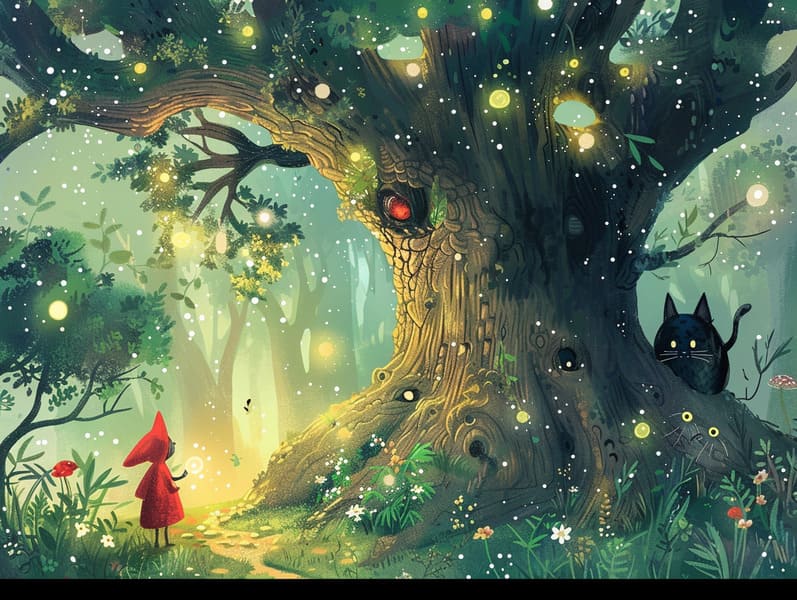A Brief History of Traditional Fairy Tales with Its Unceasing Captivation.
A Brief History of Traditional Fairy Tales with Its Unceasing Captivation.
Blog Article

Timeless fairy tales have ancient roots. These tales have been whispered from one generation to the next well before they were ever published. They developed from a variety of societies, including Eastern traditions. They were initially passed along among grown-ups, often carrying themes and messages reflective of the societal norms and beliefs of the time.
The Grimm brothers, Jacob and Wilhelm (the Grimm brothers), were among the first to compile and release many of these beloved tales. Their anthology, "Grimm's Fables," included classics like "Cinder Maid," "Hansel and Gretel," and "Snow-White and Rose-Red," which have since become hallmarks in the world of beloved fairy tales. Similarly, the Danish author's whimsical tales, such as "The Sea Maid," and "The Little Duckling," have captured hearts worldwide, establishing their place in the pantheon of treasured fairy tales.
Despite their age, fairy tales remain as applicable as ever, especially as nighttime stories for kids. These whimsical stories are now available in multiple formats, including colorful picture books, captivating animations, and digital storybooks.
Their persistent charm can be ascribed to several fascinating points:
Valuable Lessons: Traditional fairy tales often illustrate important moral lessons. Fairy tales like "The Boy Who Cried Wolf" teach the virtue of being truthful, while "The Race of the Tortoise and the Hare" underline the qualities of steadfastness and unassuming nature. These stories offer young ones clear distinctions between right and wrong, building their moral compass in a tender yet important way.
Sympathy and Perception: Fairy tales frequently showcase heroines facing tests and troubles, motivating audiences to connect with their struggles and celebrate their triumphs. For instance, "Beauty's Beast" emphasizes the benefit of seeing beyond the surface to understand the true nature of a person, fostering tenderness and perception.
Cultural Comprehension: Many timeless fairy tales are steeped in the cultural contexts from which they developed. Understanding these stories can provide fascinating glimpses into different social structures, building a sense of world insight and knowledge.
Creativity and Fantasy: The mythical elements in old fairy tales—magical beings—enhance children’s imaginations. These fairy tales lead readers to fantasy realms, fostering inventive ideas and a sense of excitement that remains a lifetime.
Timeless fairy tales are not only alluring but also pedagogical. They function as fantastical tools in enhancing various cognitive and emotional skills in the young. When timeless fairy tales are narrated, they improve language skills by introducing new vocabulary and detailed sentence structures. This practice also strengthens hearing abilities and attentiveness, as little ones focus on every detail, enthusiastic to see what happens next.
Furthermore, talking about the themes and characters of old fairy tales can enhance thought processes and reasoning skills. Children learn to see patterns, anticipate outcomes, and know cause and effect. These discussions also encourage children say their thoughts and feelings, advancing their emotional intelligence.
In today’s modern era, the presence of online fairy tales has made these tales more available than ever. Online platforms and digital apps supply huge assortments of classic fairy tales that can be enjoyed or played anytime, anywhere. Fairy tales read aloud are particularly well-received, extending an charming way for the young to delight in these charming stories. Read-aloud books and narrated videos guide characters and settings to life, often augmented by delightful melodies and tunes that augment the tale journey.
The unfading fascination of old fairy tales lies in their ability to transform to modern days while sustaining their underlying messages. Contemporary retellings of these narratives often incorporate more multicultural figures and modern settings, making them meaningful to today’s audience. However, the basic principles of valor, benevolence, and justice remain unchanged, continuing to move young listeners of all ages.
Timeless fairy tales also offer a sense of comfort and closeness. They bestow a tidy narrative with a obvious beginning, middle, and end, often finishing with the conclusion of conflicts and the triumph of good over bad. This regularity can be easing for young readers, giving a sense of solidity in an unpredictable world.
Timeless fairy tales continue to mesmerize and enlighten new generations, maintaining their appeal and impact in modern society. As children's bedtime stories, they give a perfect blend of allure and teaching, boosting moral values, empathy, and creativity. The existence of digital storybooks and the sought after status of fairy tales told out loud validate that these traditional tales remain within reach to new generations.
By holding onto and telling these fairy tales, we continue to venerate the rich tapestry of myths and cultural heritage. Whether you are exploring a vibrantly illustrated book, experiencing a virtual library, or listening on an read-aloud book, the wonder of traditional fairy tales is always within reach. These fairy tales teach us of the lasting influence of stories and its ability to draw us together across generations and cultures.
No matter if you are experiencing a richly illustrated book, accessing a web collection, or listening on an voice book, the charm of timeless fairy tales is always within reach.
These fairy tales point out of the undying presence of narratives and its ability to tie us across generations and cultures, creating a bond that fairy tales for kids captivates and teaches alike.